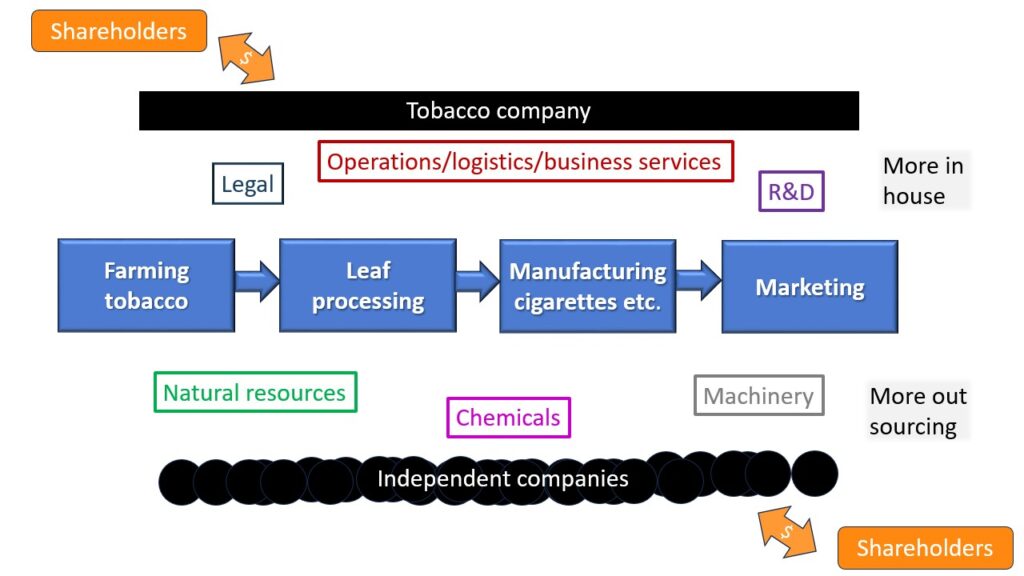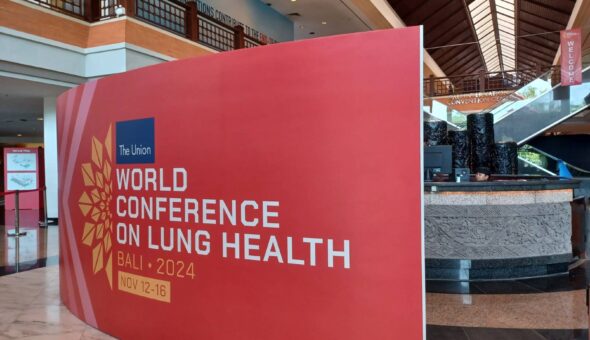Written by Rosemary Hiscock, Research Associate

Figure 1 Independent companies contribute to the tobacco supply chain
The addictive properties of nicotine enable transnational tobacco companies to amass enormous profits from supplying tobacco products.1 2 These companies are not the only companies to make their profits from tobacco, however. Using our tobacco supply chain database (TCSD)3 ,TCRG researchers identified 754 independent companies with headquarters located in 88 countries that are engaged in tobacco supply chain processes.4
Some of these companies were local companies making cigarettes and other tobacco products such as cigars or waterpipe tobacco and devices. Other companies were engaged in processes or production of products which contribute to the supply of tobacco products such as machinery (for farms, warehouses and factories), chemicals (e.g. agrochemicals and flavours), wood-based products (e.g. cigarette papers and filters) or undertaking processes (leaf processing or shipping) (figure 1).
Our recently published research5 reports an analysis of a subset of supply chain contributing companies. We included companies with identifiable annual reports which are required for public listing so the majority of these companies were answerable to shareholders. These companies were prominently reporting their Environmental Social Governance (ESG) activities on their webpages and in annual reporting yet were contributing to the tobacco industry. That is the same tobacco industry which is causing 5% of global deforestation and environmental harm through the 4 trillion cigarette butts which are littered annually6. Moreover, tobacco products are the only commercial product that kills half its users if used as intended.
Figure 2 The activities of the tobacco industry damage the environment and harm public health
Arguably the most important activity that these companies could report for ESG would be ending their support for the tobacco supply chain.
What we don’t know about these independent companies is the extent to which they are dependent on the tobacco supply chain – only 9 of the 80 companies analysed presented a financial contribution from tobacco activities.5 For some companies listed in the TCSD, the tobacco supply chain is their main business and any diversification activities appear to mostly be window dressing. Such companies need to be supported to bring these ideas into reality.
Other companies were large global players supplying products to many industry sectors and making billions of dollars in profit – thus withdrawing from the tobacco sector will make a relatively small and short term financial impact. Major players have global responsibility to withdraw from supporting the tobacco sector. Some multinationals have already successfully withdrawn from their role in the tobacco supply chain.7 More information publicly available on tobacco’s role in tobacco supply chain companies would be helpful for existing and potential company employees, shareholders and customers, as motivation to move away from the sector.
Furthermore, the majority of cigarettes are smoked and tobacco leaf is grown in low and middle income countries.8 9 In keeping with this, some supply chain companies are moving headquarters or operations to these countries where tobacco control is often harder to implement and enforce.11
Commercial entities now have huge power. They must go beyond financial obligations to shareholders and paying lip service to ESG indices in order to solve some of the most important problems of our planet.
References
- Branston J, Gilmore A. The extreme profitability of the UK tobacco market and the rationale for a new tobacco levy. University of Bath, 2015.
- Branston JR. Industry profits continue to drive the tobacco epidemic: A new endgame for tobacco control? Tobacco Prevention & Cessation 2021;7(June):1-3. doi: 10.18332/tpc/138232
- Bloomfield MJ, Hiscock R, Mehegan J, et al. Tobacco Supply Chains Database: Tobacco Control Research Group, University of Bath; 2021 [updated 27 October 2021; cited 2022 10th January]. Available from: https://tobaccotactics.org/supply-chain/.
- Dunwoodie Stirton F. Supplying the deadly tobacco industry [Blog]. Tobacco Control Research Group; 2023 [updated 22 May 2023]. Available from: https://stg-universityofbathblogs-staging.kinsta.cloud/tcrg/2023/05/22/supplying-the-deadly-tobacco-industry/ accessed 22 December 2023.
- Dunwoodie Stirton F, Hiscock R, Mehegan J, et al. Independent Companies in the Tobacco Supply Chain: Transparency and Environmental Social Governance. Tob Control 2025 doi: 10.1136/tc-2024-058978
- Organization WHO. Tobacco: poisoning our planet: World Health Organization 2022.
- Hiscock R. Why do tobacco supply chains matter to the UK: tobacco and food security. IPR Blog, 2023.
- Tobacco Atlas. Global Strategy 2022 [updated 18 May 2022; cited 2025 7 January]. Available from: https://tobaccoatlas.org/solutions/global-strategy/.
- Tobacco Atlas. Growing 2023 [updated 3 November 2023; cited 2025 7 January]. Available from: https://tobaccoatlas.org/challenges/growing/.
- Tobacco Control Research Group. Tobacco Supply Chain Database research - agricultural chemical supplier: University of Bath, 2021.
- Sreeramareddy CT. Challenges to Implementation of Tobacco Control Intervention in Low- and Middle-Income Countries. Nicotine Tob Res 2024;27(1):1-2. doi: 10.1093/ntr/ntae238
Figure 2a purchased from https://www.deviantart.com/waybyart/art/3D-structure-in-an-open-book-10-987838093
Figure 2b downloaded from https://i1.pickpik.com/photos/493/744/847/skull-cigarette-death-skull-and-crossbones-a1f544b5fc7859111e2b7c583aff9742.jpg



